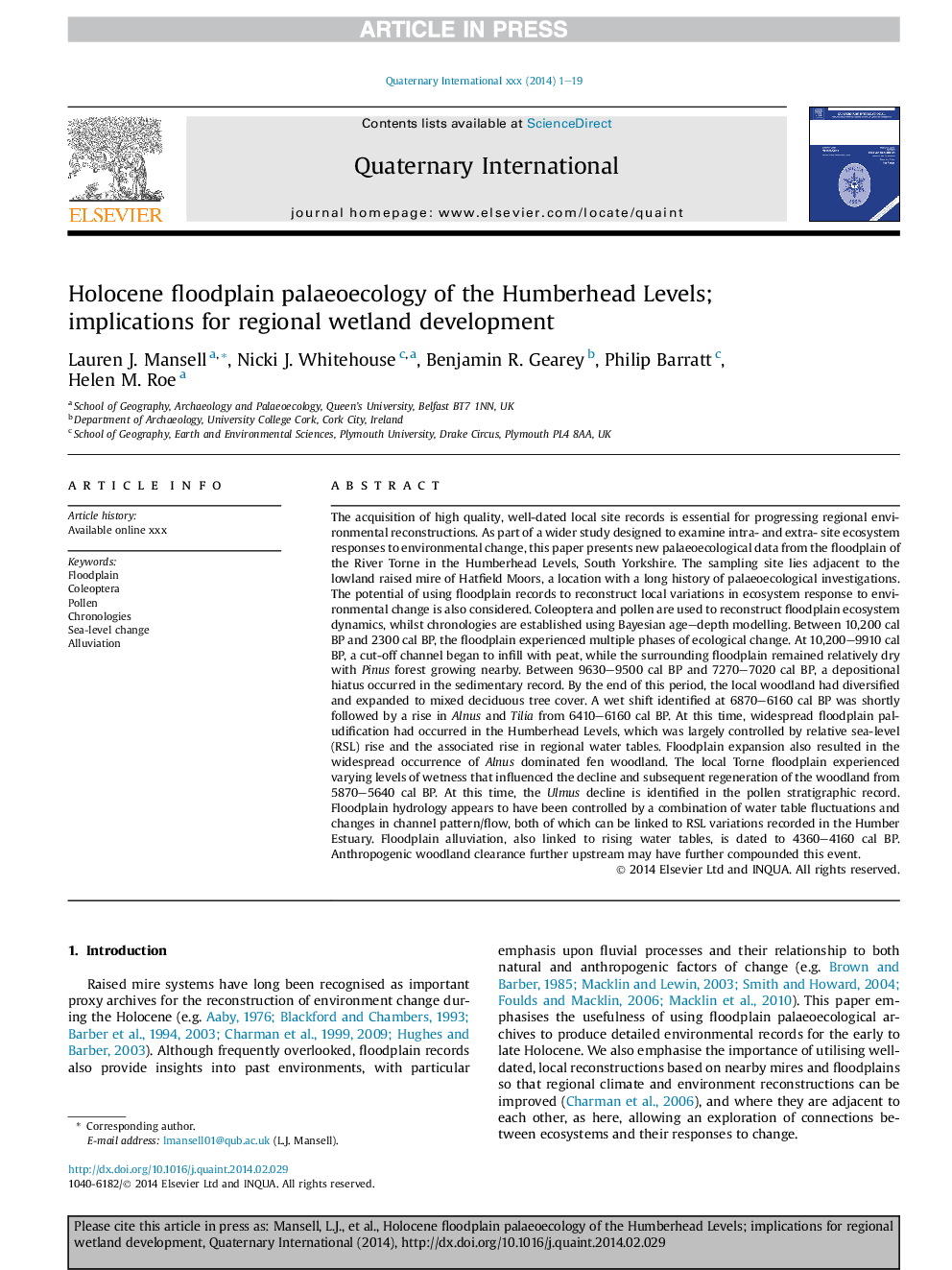| کد مقاله | کد نشریه | سال انتشار | مقاله انگلیسی | نسخه تمام متن |
|---|---|---|---|---|
| 7452222 | 1484155 | 2014 | 19 صفحه PDF | دانلود رایگان |
عنوان انگلیسی مقاله ISI
Holocene floodplain palaeoecology of the Humberhead Levels; implications for regional wetland development
ترجمه فارسی عنوان
پالئواکولوژی سیلاب هولوسن سطح هامبرده؛ پیامدهای توسعه تالاب منطقه ای
دانلود مقاله + سفارش ترجمه
دانلود مقاله ISI انگلیسی
رایگان برای ایرانیان
کلمات کلیدی
موضوعات مرتبط
مهندسی و علوم پایه
علوم زمین و سیارات
زمین شناسی
چکیده انگلیسی
The acquisition of high quality, well-dated local site records is essential for progressing regional environmental reconstructions. As part of a wider study designed to examine intra- and extra- site ecosystem responses to environmental change, this paper presents new palaeoecological data from the floodplain of the River Torne in the Humberhead Levels, South Yorkshire. The sampling site lies adjacent to the lowland raised mire of Hatfield Moors, a location with a long history of palaeoecological investigations. The potential of using floodplain records to reconstruct local variations in ecosystem response to environmental change is also considered. Coleoptera and pollen are used to reconstruct floodplain ecosystem dynamics, whilst chronologies are established using Bayesian age-depth modelling. Between 10,200Â cal BP and 2300Â cal BP, the floodplain experienced multiple phases of ecological change. At 10,200-9910Â cal BP, a cut-off channel began to infill with peat, while the surrounding floodplain remained relatively dry with Pinus forest growing nearby. Between 9630-9500Â cal BP and 7270-7020Â cal BP, a depositional hiatus occurred in the sedimentary record. By the end of this period, the local woodland had diversified and expanded to mixed deciduous tree cover. A wet shift identified at 6870-6160Â cal BP was shortly followed by a rise in Alnus and Tilia from 6410-6160Â cal BP. At this time, widespread floodplain paludification had occurred in the Humberhead Levels, which was largely controlled by relative sea-level (RSL) rise and the associated rise in regional water tables. Floodplain expansion also resulted in the widespread occurrence of Alnus dominated fen woodland. The local Torne floodplain experienced varying levels of wetness that influenced the decline and subsequent regeneration of the woodland from 5870-5640Â cal BP. At this time, the Ulmus decline is identified in the pollen stratigraphic record. Floodplain hydrology appears to have been controlled by a combination of water table fluctuations and changes in channel pattern/flow, both of which can be linked to RSL variations recorded in the Humber Estuary. Floodplain alluviation, also linked to rising water tables, is dated to 4360-4160Â cal BP. Anthropogenic woodland clearance further upstream may have further compounded this event.
ناشر
Database: Elsevier - ScienceDirect (ساینس دایرکت)
Journal: Quaternary International - Volume 341, 18 August 2014, Pages 91-109
Journal: Quaternary International - Volume 341, 18 August 2014, Pages 91-109
نویسندگان
Lauren J. Mansell, Nicki J. Whitehouse, Benjamin R. Gearey, Philip Barratt, Helen M. Roe,
